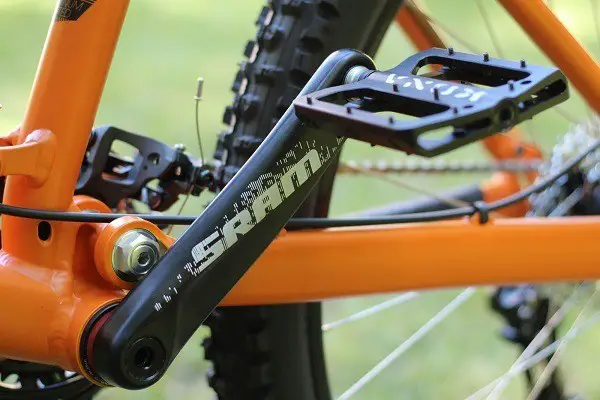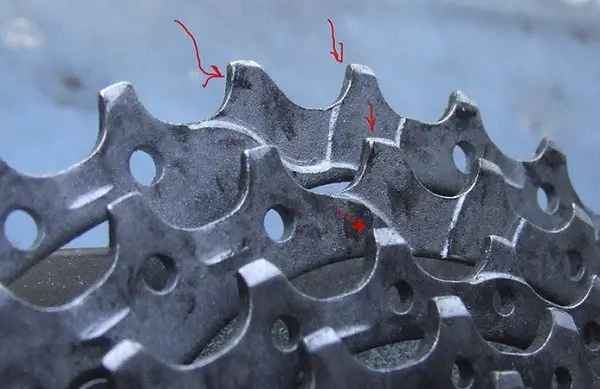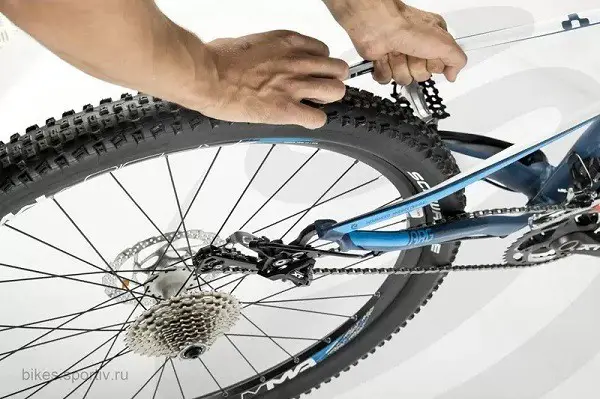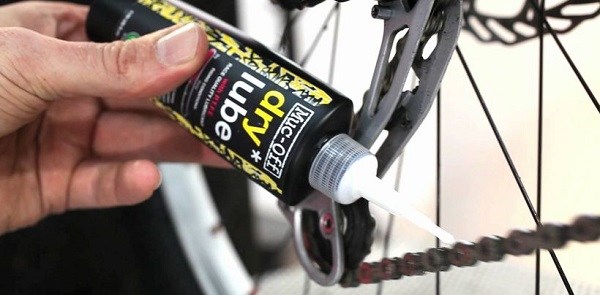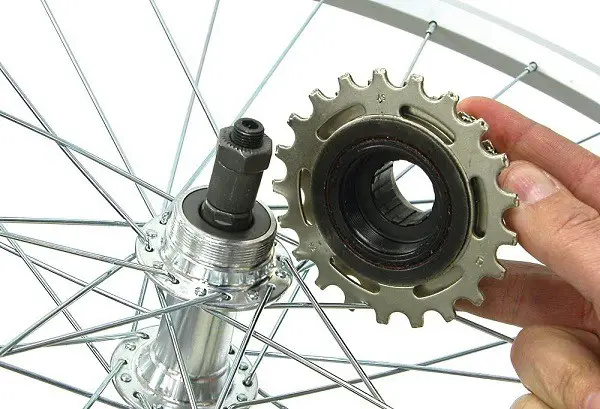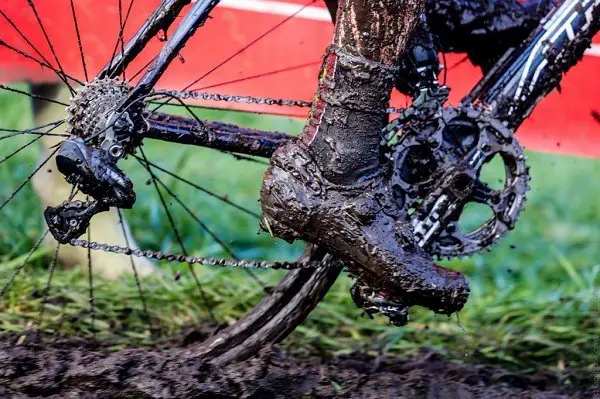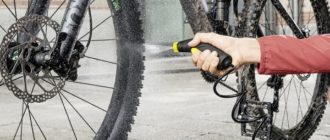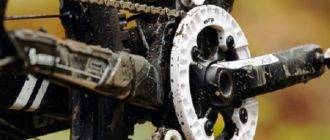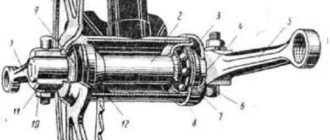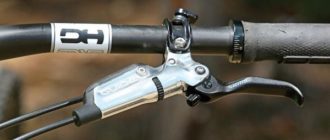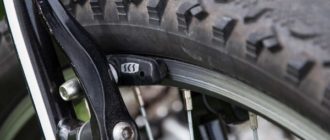“Listen to your bike,” the professionals advise. No one can predict what will happen at competitions or while riding around town if the two-wheeled machine suddenly breaks down. The situation when the pedals on a bicycle spin, familiar to every owner of the vehicle. Although the damage does not require expensive repairs, the problem will cause a lot of trouble. Therefore, it is useful to know how to diagnose scrolling and how the breakage is treated.
Why the pedals on a bicycle scroll
Cyclists are familiar with cases where the pedals spin quickly, and when moderate pressure is applied, the bike rides slowly or tends to stop. The problem manifests itself differently in different types of vehicle. On single-speed models, it means the freewheel roller mechanism is slipping due to wear or grease on the rollers. On a speed bike, the pedals spin freely with the wheel sprockets. The malfunction indicates a lack of engagement of the dog with the ratchet, getting water and dirt on the parts. The defect is recognized by the following signals:
- The free movement of the pedals increases;
- if the wheel swings out or does not swivel;
- The bicycle chain slips when moving.
Often the pedals do not pedal at all speeds and only when the load is increased. This situation is due to wear of the chain and sprockets. If the slippage increases, you will have to change the cassette. Failure indicates damage in the pedal and crank assembly. To find out why the pedals on the bike are cranking, it is necessary to disassemble the design and determine the cause of the damage.
Interesting Fact
Scottish Mark Beaumont, who cycled around the globe in 79 days, singles out idle pedaling among the top five causes of a fall. The world champion was constantly changing parts of the crank and pedal group during the trip, and the chain every 8 days.
Causes of cranking
As soon as cranking appears on the bike, a malfunction in the carriage is immediately suspected. But this is only part of the problem associated with other parts of the drivetrain.
Wheel spinning on single-speed, road and mountain bikes causes the hub to wear. The gearing is lost, and the sprockets don’t transmit torsion to the hub.
Idle rotation on speed bikes is due to a damaged ratchet. Chain slippage causes complete wear on bearings and cranks.
Technical design failure is caused by:
- chain stretching;
- improper adjustment of the derailleurs;
- worn sprockets;
- damage to the rear ratchet;
- bearing problems.
Frayed front sprockets combined with an old chain increase pedal cranking. But it’s not just technical problems that are the main cause of cranking. The problem occurs when the bike is poorly maintained, when parts are not cleaned of dirt buildup and do not keep up with lubrication.
How to eliminate pedal scrolling on your bike
This is the first question that arises when a pedal device cranks. Repair depends on the type of bike, as the problem is due to different causes. Investigating the breakdown of the vehicle begins with general steps:
- Dismantling the rear wheel and transmission.
- Inspecting the chain and ratchet in the sprockets.
- Inspection of the rear wheel hub.
- Cleaning the parts from contamination.
On conventional bikes, the problem is often relieved after washing the links with a soapy solution (kerosene) and treating the transmission with silicone grease. If the pedals keep cranking, it’s time to replace the chain and sprockets by installing a complete set on the bike. It will be necessary to repair the hub, if the inner part of the part rotates, and the outer part does not move. Cardinally solves the problem by grinding the cone in the workshop. Sometimes the damage cannot be repaired. In these cases, the bushing must be replaced.
The main cause of pedal scrolling on a speed bike is considered to be complete wear of the rear sprockets. To fix the failure, first clean the carriage with a rag soaked in kerosene. After checking the condition of the bearings, proceed as follows:
- Replace crumbled and dislodged parts;
- check the condition of the sprockets;
- Replace worn teeth;
- remove the cassette and inspect the rear bushing;
- check condition of cone and rollers;
- if there is obvious wear, install a new part;
- check the operation of the speed selector.
To prevent cranking, cyclists are advised to have the vehicle diagnosed and troubleshooted in a timely manner.
Problems with sprocket cranks
The pedals of a bicycle are under constant strain. The friction causes the sprocket cranks to wear out. The problem is indicated by the cogs (rounded or broken state). The defect is not repairable. Therefore, it is recommended to replace the chain and sprockets completely to fix the problem. If there is no damage, the device is cleaned of dirt and residues of old oil with kerosene. Sometimes, the slipped teeth are ground up, and the broken sprocket is replaced on its own. But it is worth understanding that with this method of “home treatment”, it is difficult to achieve the required quality of parts.
Chain damage
A common cause of scrolling pedals is the lack of chain adjustment. The failure is eliminated with kerosene and cleaning agents. The mechanism is rid of dust and dirt, and after drying apply lubricants (spray or liquid). In addition to clogging with dirt, the chain often stretches and sags. The defect is easily corrected by finding the latch link. Once the latch is disconnected, the damaged links are removed and the chain is reinstalled in its old place. If the connecting rods continue to crank, the chain is replaced.
Bearing Problems
Pedal cranking often occurs when the bearings in the hub are stuck or lost. The damage is found when disassembling the mechanism and corrected by adding a missing number of steel balls. The quality of the stars is checked at the same time. The worn teeth should be replaced. After cleaning, the parts are reinstalled. Proceed with caution during repair and maintenance, as bearings tend to shatter quickly.
Rear ratchet malfunction
Pedal cranking is caused by a malfunction in the rear ratchet:
- excess oil;
- lack of lubrication;
- corrosion;
- crumbling or seized bearings;
- water, dust or dirt.
After removing the ratchet sprockets, the defect is visible under good lighting. The problem is quickly corrected. The deformed or broken mechanism is replaced with a new one.
Incorrect setting of the derailleur
Using the derailleur correctly allows you to gain more speed and not be afraid of steep climbs. If you pedal hard but ride slowly or not horizontally, you have the wrong derailleur. That is, the derailleur does not reach the right sprocket.
What to do to fix the breakage:
- check the tension;
- clean and oil the cable;
- Re-adjust the gear system;
- perform a test run in which the pedals should not rotate;
- replace damaged cables with new ones.
If there is no change, check the other components of the bike.
Contamination of operating elements
Unpleasant situations will not occur if the bike is cared for properly. Dirt, old oil, excessive moisture affect the operation of the entire structure. Sometimes it is enough to wash in a soapy solution and lubricate the working elements to eliminate the failure. If the vehicle has been in the garage for a long time, the chain is removed and lowered into a basin with kerosene. This will clean the device and prevent the chain from stretching. Any repair or replacement of bicycle parts should end with a cleaning, drying and lubrication procedure.
Tips for Avoiding Pedal Cranking
Professional advice can help prevent bicycle malfunction:
- Pay attention to the appearance of clicks or extraneous sounds.
- Detecting the first signs of trouble prevents a serious breakdown.
- Inspect parts regularly for wear and tear and for the presence of silicone grease.
- Clean and thoroughly lubricate the transmission with special products.
- If you rotate the pedals, find out the cause of the malfunction immediately.
- Have the fault rectified immediately.
- Replace deformed or destroyed operating elements in good time.
- Ensure comfortable storage conditions for the bike.
- Keep the overall condition and cleanliness of the parts of the vehicle to prevent breakage.
Conclusion
One and a half billion people on our planet use a bicycle on a regular basis. Riding it burns 600 calories per hour. Lung volume increases to nine liters from the usual six. The blood circulation pumps twice as much oxygen as pedestrians. For these qualities alone, one can love the bicycle. Careless handling or inattention leads to breakdowns. Keep your vehicle in good working order for a long time with the help of pedal care tips.

